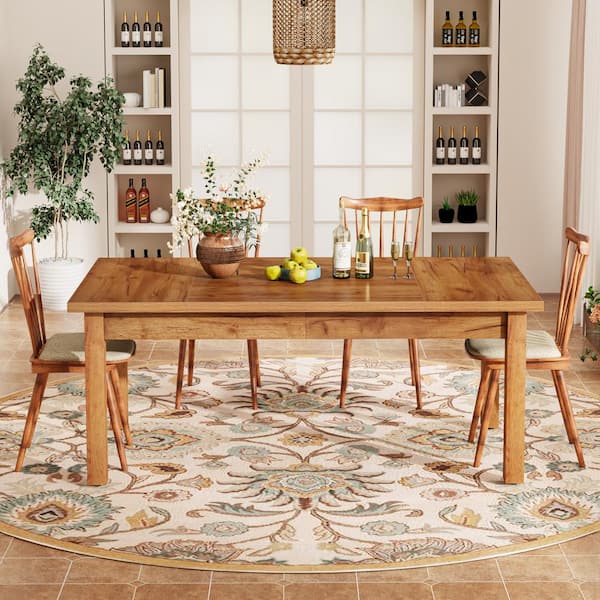Dining Room Table Legs That Integrate Performance and Modern Style
Dining Room Table Legs That Integrate Performance and Modern Style
Blog Article
A Detailed Take A Look At Table Leg Styles: Finding the Ideal Suit
Choosing the ideal eating table leg style is essential for both aesthetic allure and functional functionality. Typical 4 legs provide timeless sophistication and stability, while the stand base supplies increased legroom and a modern appearance. For those with larger tables, trestle legs make certain strong support, whereas barrette legs present a mid-century modern ambiance with their minimalist layout. The x-shaped legs blend modern design with boosted security. Each of these choices brings unique advantages, making the option greater than just a matter of choice. Explore additionally to discover which design completely matches your eating space and way of living.
Standard Four Legs
Among the various types of eating table leg styles, the standard four-leg style stays an ageless choice for many houses. 4 legs supply well balanced support, guaranteeing the table remains secure and capable of bearing substantial weight (dining room table legs).
From a visual viewpoint, the standard four-leg style can be easily adapted to various indoor designs. Whether crafted from wood, steel, or a mix of materials, these legs can be elaborately carved, sleek and minimalistic, or anything in between. Their convenience enables them to enhance both rustic and contemporary settings effortlessly.
Furthermore, the straightforward structure of the four-leg design promotes simplicity of motion and placement within an area. Unlike more facility bases, this style minimizes blockages, providing enough legroom for restaurants. In recap, the conventional four-leg table leg design marries sustaining beauty with functional functionality, making it a sharp selection for those looking for both type and feature in their dining furnishings.
Pedestal Base
Commonly commemorated for its elegant and space-efficient style, the pedestal base is a recognized alternative to the traditional four-leg arrangement in dining table leg designs. This distinctive base normally features a single main column supporting the table top, which can differ in form, from ornately sculpted timber to sleek, modern steel. Among the primary benefits of the stand base is its ability to make the most of legroom and seating adaptability. Without corner legs, restaurants are paid for better liberty of movement, making it a suitable option for round and oblong tables that promote more intimate and inclusive celebrations.
The main column itself uses a canvas for elaborate designs and imaginative expressions, adding an element of aesthetic rate of interest below the table. In recap, the pedestal base incorporates performance with style, making it an improved and functional option for varied dining environments.
Trestle Legs
Trestle legs supply a robust and classic foundation for dining tables, defined by their horizontal cross-bracing and tough support light beams. Originating from middle ages times, this layout has actually developed yet preserved its vital structure, making it a seasonal fave in both conventional and modern settings. The main trestle beam, usually supported by 2 or more upright posts, uses outstanding security, enabling bigger table lengths without the requirement for added legs.
A considerable benefit of trestle leg tables is the ample legroom they use. Unlike tables with 4 corner legs, the absence of blockages at the table's sides offers unobstructed room for chairs and diners, enhancing convenience and ease of access. This makes trestle tables perfect for suiting bigger gatherings, whether in an eating area or a banquet hall.
The aesthetic adaptability of trestle legs is significant. Available in a range of materials such as wood, metal, and composite, they can be completed to enhance a large range of interior styles. From rustic farmhouse to sleek modern designs, trestle legs can be personalized to fit specific preferences. Their enduring charm and useful advantages make trestle legs an engaging selection for those looking for both design and practicality in their dining table.
Hairpin Legs

The allure of hairpin legs depends on their simpleness and versatility - dining room table browse around this site legs. Offered in an array of materials, including steel and brass, they can be ended up in numerous colors to match various indoor styles. Whether paired with a rustic wooden table top or a contemporary glass surface, barrette legs effortlessly mix functionality with a touch of vintage appeal
Durability is one more significant attribute of hairpin legs. In spite of their fragile look, these legs are engineered to birth substantial weight, guaranteeing the table remains steady and safe. In addition, they are reasonably easy to install, making them a popular option for do it yourself lovers and expert furnishings manufacturers alike.
X-Shaped Legs

Created from materials such as steel, timber, or a combination of both, X-shaped legs can be customized to match different layout preferences. Steel legs usually lend a smooth and commercial feel, ideal for loft-style apartment or condos and modern-day eating spaces. On the various other hand, wooden X-shaped legs use a warmer, more rustic appeal, ideal for farmhouse or eclectic insides. The versatility in materials enables home owners to personalize their table to better fit their general style system.
In addition, the engineering behind X-shaped legs ensures even weight distribution, decreasing the risk of wobbling and enhancing sturdiness. This makes them especially appropriate for bigger table that call for added assistance. Essentially, X-shaped legs mix sensible design with modern-day aesthetic appeals, making them a classic option for varied dining atmospheres.
Final Thought
An extensive understanding of dining table leg designs exposes the distinct features and benefits of each layout. Trestle legs make sure robust assistance for larger tables, and barrette legs present a mid-century modern visual.
Report this page